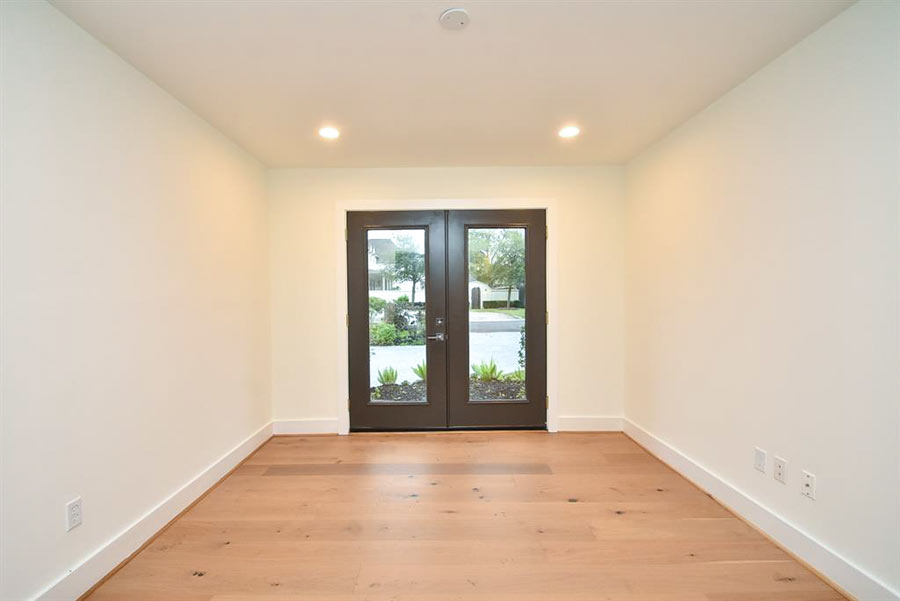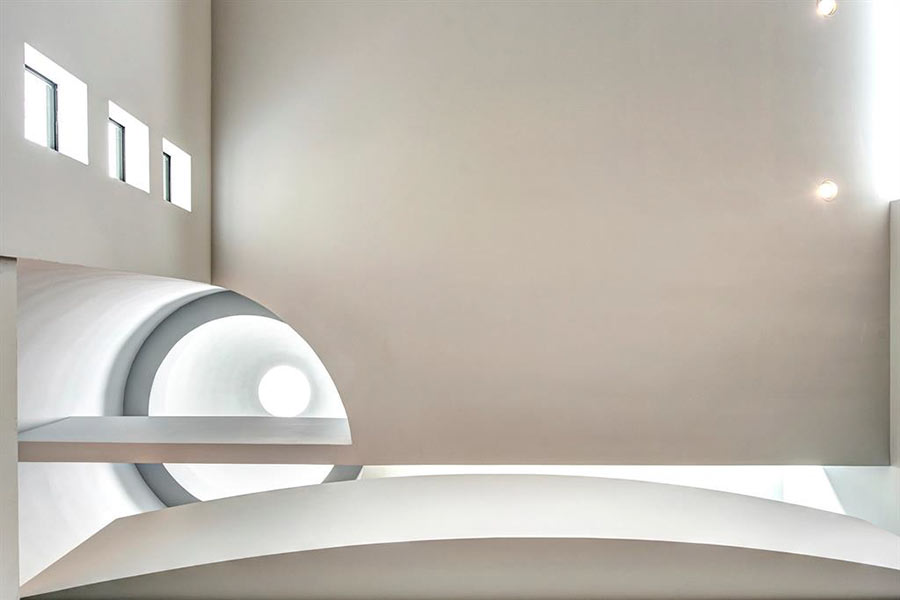BRICK ON THE INSIDE Before his dog Teddy runs off with it, new Norhill resident John Whiteside finds a convenient doorstop solution: “None of the doors in my house close. Well, the closets do. But the actual doors into rooms – no. . . . It is a little more crooked than most Heights houses (which are always a little crooked, unless they’re new, in which case they will be crooked soon as the shitty modern constructions settles in). I would like it if the doors latched, but I’m not going to deal with that until I am sure there are no additional foundation repairs in the offing. This is normally fine because it doesn’t really bother me if I’m peeing and suddenly the door comes in and Teddy strolls in. ‘Hey, whatcha doin’?’ However, on Saturday I had people over for a little housewarming open house, and I realized on Saturday afternoon that guests might not enjoy Teddy visits during personal moments quite as much. What to do? Why, a doorstop seemed like the ideal answer. I looked around the house for a suitable heavy object. Then I had a great idea; there’s been a pile of red bricks sitting outside next to the air conditioning unit since I moved in. Solid, compact, easy to slide over in front of the door, and kind of rustic – the perfect doorstop!” [By the Bayou]




Good quick thinking!
As for settlement issues in pier and beam homes, it’s not impossible to fix, but I don’t have a clue of cost (anybody had it done?). It has to be less then foundation repair than slab foundations that run into settlement issues.
Pier and beam houses are a little easier to fix and the amount of fixing may be limited to how much it settled and where under the house the settlement occurred. PnB houses can suffer “differential settlement” where not all piers may settle the same amount. The solution for old homes is to elevate the home at the locations of greater settlement to level it off.
In new PnB construction I’ve seen in New Orleans, the approach is to utilizing thin foundation strips that are all interconnected under the piers. The foundation can be set a few inches underneath the natural ground surface. The piers rest on this foundation. You get the benefits of pier and beam but the rigidity of a solid foundation.
Well, it didn’t work as I’d hoped… read the full entry :).
I did a repair (expected, after my inspection) when I first got the house this summer – that was a pretty significant one, involving repairs to some badly done work from a few years ago and adding some additional piers for support. It made a bit difference. There’s still some unevenness to the house, and I have a feeling that fixing the part that really needed it shifted a few other things around. So I am letting it sit a bit, and then may have some smaller things done. My main concern isn’t having a perfectly level house, it’s making sure the foundation is stable and things won’t keep moving around.
I’m from the north, where “foundation repair” generally leads to thoughts like “second mortgage,” so it was really amazing to me how easily one can repair a p&b foundation – I have a real appreciation for them now.
Dude, it’s easy, just get a 20 or 30 ton bottle jack, the kind you can buy at any auto part or hardware store. Don’t get a floor jack, just the ones that are a bottle shaped jack.
Now, pay attention to your feet as you walk around your home. You’ll quickly get a sense of where the low spots are if you feel for where you are going vaguely uphill or downhill on your floor. Or, try rolling marbles on the floor and see where they want to go. Not a great option since it will ruin your wood floor, but if you ever do have a large spill or plumbing leak you will see where the lower spots are very quickly.
Next, have a look at the structure of your house underneat there. The perimeter beams are going to be very easy to get to, but likely there is at least one beam down the middle of the house. If you have to raise that one, just remember that exercise is good for you.. and once you get under the house you’ll probably be surprised to see how cool and remarkably peaceful it is. No wonder dogs love to nap up under there. Some people will fear spiders or killer mold or something, but I’ve been under a number of houses, and I’ve not had any problems. No worries!
To raise a stack, just start a new one right next to it.. I like to use the solid concrete blocks that half the height of the normal ones. Pile those up to close the height of the jack, and then unscrew the thingie in the middle of the jack to bring it up to the beam. It’s a good idea to put a small piece of scrap wood between the jack and the beam, or otherwise you can make a little jack-shaped hole in your beam- probably not a big deal. Anyway, jack the beam up until you are able to put a shim in there- steel shims are nice, but hard to find, I just use wood for the smaller ones. Then you can let your jack down, and reset- the new stack your jack was on will have pushed itself down into the ground more than the house will have gone up, so you’ll need another shim or two under the jack before you start lifting again. Procede like this, adding more or larger shims, or concrete-block half pieces, until you get your floor the way you want it. Just go inside and give it a feel, see if your doors latch now, etc. Hey, it’s more productive exercise than running around in a circle in memorial park, right?
Important thing to keep in mind as you work is that the existing locations for the concrete blocks are already sitting on 80 years worth of soil compression. If you start a new stack somewhere else, and you don’t put some concrete down 3 or 4 feet, that new spot will sink over the next couple of years. So, just keep all the existing stacks, though you can add new stacks to cure a sag. On my house, when adding new stacks, I didn’t pour any concrete, I just dug down about a foot about put a 16″ x 16″ wide piece on the bottom, using a dollar-store level to make sure it was sitting in there flat.
Ok, the redneck way to do this process is to lower the house, rather than raise it. Sure, this is easier but also moves your house that much closer to termite-ville, and closer in time to the moment when the beams are sitting directly on the dirt, which is kind of the dead-man-walking state for a wood framed house. And if you never raise your house, that day is a matter of when, not if, in this city of mud.
Old houses rock for the kind of do-it-yourself options like this. I say, go for it.. besides you only have to do a little bit at a time, it’s not a lifelong committment.
Oh, and when the jacks stop working from all that weight, I just trash them and buy another $30, 20 ton jack- much cheaper than buying real ‘house jacks’.